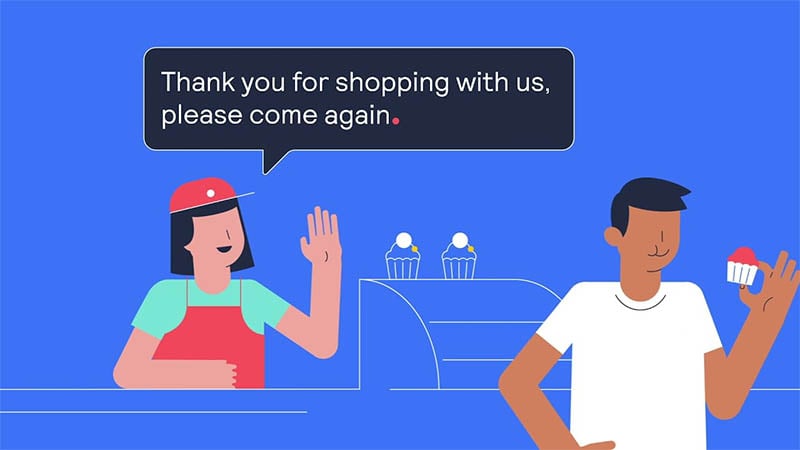Our guide at a glance
What are payments?
Payment process components
Payment gateway: Collecting and protecting sensitive information, like credit card details, when a customer carries out a transaction, payment gateways are the front-end technology built into websites or apps to secure the checkout experience.
Payment processor: These back-end systems enable banks and card networks to communicate and exchange data, powering real-time authorization and ensuring payments reach the right place.
Issuing bank: This is the customer’s bank — the one that issued their credit or debit card. It authorizes the transaction, checks for sufficient funds or credit and ultimately releases the funds when a payment is approved.
Acquiring bank: Once a transaction is processed, the business’s bank (the acquiring bank) temporarily holds funds in a specific merchant account as they move from the customer’s bank (the issuing bank) to the acquiring bank.
Payment facilitator: Operating on a merchant of record (MoR) model, these platforms enable businesses — most often SMBs — to accept payments by operating under a shared account with an acquiring bank, instead of setting up their own account.
How digital payment processing works
Here’s what happens when a customer purchases online, from clicking ‘buy’ to the merchant receiving funds.
- Customer starts the payment: The customer enters their payment details at checkout.
- Details are authenticated and encrypted: The details — such as a credit card number or wallet credentials — are passed to a payment gateway, which authenticates and encrypts the data and securely sends it to the payment processor.
- Authorization is requested: The payment processor contacts the customer’s bank (the issuing bank) to check that the funds are available and the transaction is legitimate.
- Transaction is approved or declined: The issuing bank responds — approving or declining the transaction, depending on whether it passes its checks.
- Funds are settled: If approved, the money moves from the customer’s bank to the business’s merchant account. Depending on the setup, this can take one to two days or happen instantly with real-time payments.

Security measures in digital payments
Secure online payments protect sensitive data and build trust, so merchants must find the right fraud prevention balance. You need just enough friction to confirm a customer’s identity without disrupting their experience or turning away legitimate transactions. At the same time, you must stop fraudsters and stay one step ahead of evolving threats.
Fraud checks: Ensure the legitimacy of every charge with manual and automated fraud checks carried out by merchants and banks. Combined with authentication methods like CVV, biometrics or one-time codes, they verify that the person making the payment is who they say they are.
Tokenization: Add an extra layer of protection by replacing sensitive payment information with a unique, randomly generated token — so even if data is intercepted, it’s useless to hackers. This security measure locks away a customer’s real card details in a secure token vault so they are never exposed during transactions.
Compliance standards: Protecting customer data and meeting legal obligations means staying compliant with global and regional regulations. For example, the Payment Card Industry Data Security Standard (PCI DSS) sets internationally recognized requirements for handling cardholder data, but it’s just one of many standards worldwide. Working with a payment provider that understands the nuances of these standards can help you navigate compliance, wherever you operate.
Digital payment methods
Customers expect flexible and familiar payment experiences, and businesses that don’t offer their preferred methods risk losing sales at checkout. That’s why understanding what your audience uses and supporting a range of payment options is important. Our solutions enable you to accept payments from nearly any source — whether it’s credit cards, digital wallets, bank transfers or emerging local methods.
Credit and debit cards: These are the most common and widely accepted method for online payments or in-person payments.
Digital wallets: Typically linked to a credit card or bank account, mobile-friendly wallets like Apple Pay, Google Pay and PayPal securely store a customer’s payment details, allowing for tap-and-go checkouts — all without manually entering card info.
Bank transfers: With open banking rapidly gaining ground, transfers — like those enabled by Paze in the U.S. — enable customers to pay using just their bank credentials — no cards required.
Buy now, pay later (BNPL): Giving customers the option to break purchases into manageable, often interest-free installments, BNPL is especially popular among younger shoppers and those buying higher-ticket items, helping reduce cart abandonment and increase average order value.
Local payment methods: Not every customer pays the same way, and local and alternative payment methods are rapidly gaining traction in many countries, from iDEAL in the Netherlands to BLIK in Poland or Konbini in Japan. Offering these familiar options can be the key to building trust and increasing conversion in regional markets.
Real-time payments (RTP): Instant payments are changing the game, moving money between accounts in seconds. As a result, peer-to-peer (P2P) and account-to-account (A2A) payment networks — such as Pix in Brazil and UPI in India — are fast becoming a preferred method for many consumers and businesses.
Integrate payments, unlock possibilities
Embrace trusted partnerships: No matter where you start your commerce journey — from CRM or ERP systems to order management platforms — Visa is already working with the fintechs you trust. Use our tech partner directory to find pre-integrated technology providers.
Expand your payment capabilities: By integrating with the rest of your commerce tech stack, Visa’s secure payment technology gives you the versatility to support a wider variety of payment experiences.
Enhance customer satisfaction: Offer payment options that do more than process transactions, with flexible checkout experiences that reduce friction, increase conversions and encourage repeat purchases.
Visa solutions to manage payments


Token management
Harness trusted tokenization technology to secure checkout experiences.


Integration support
Innovate and adapt to new payment types that seamlessly integrate with the rest of your tech stack.
